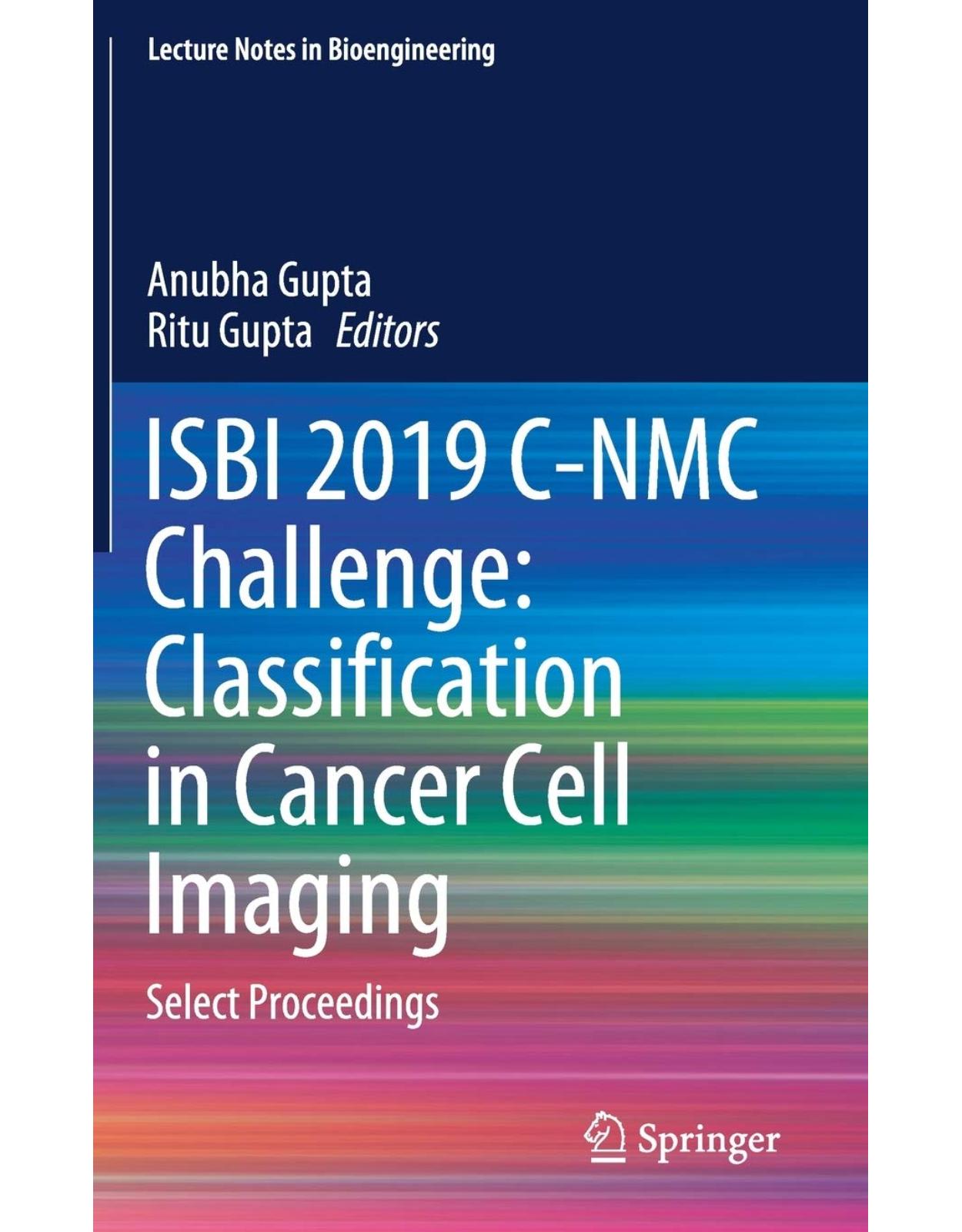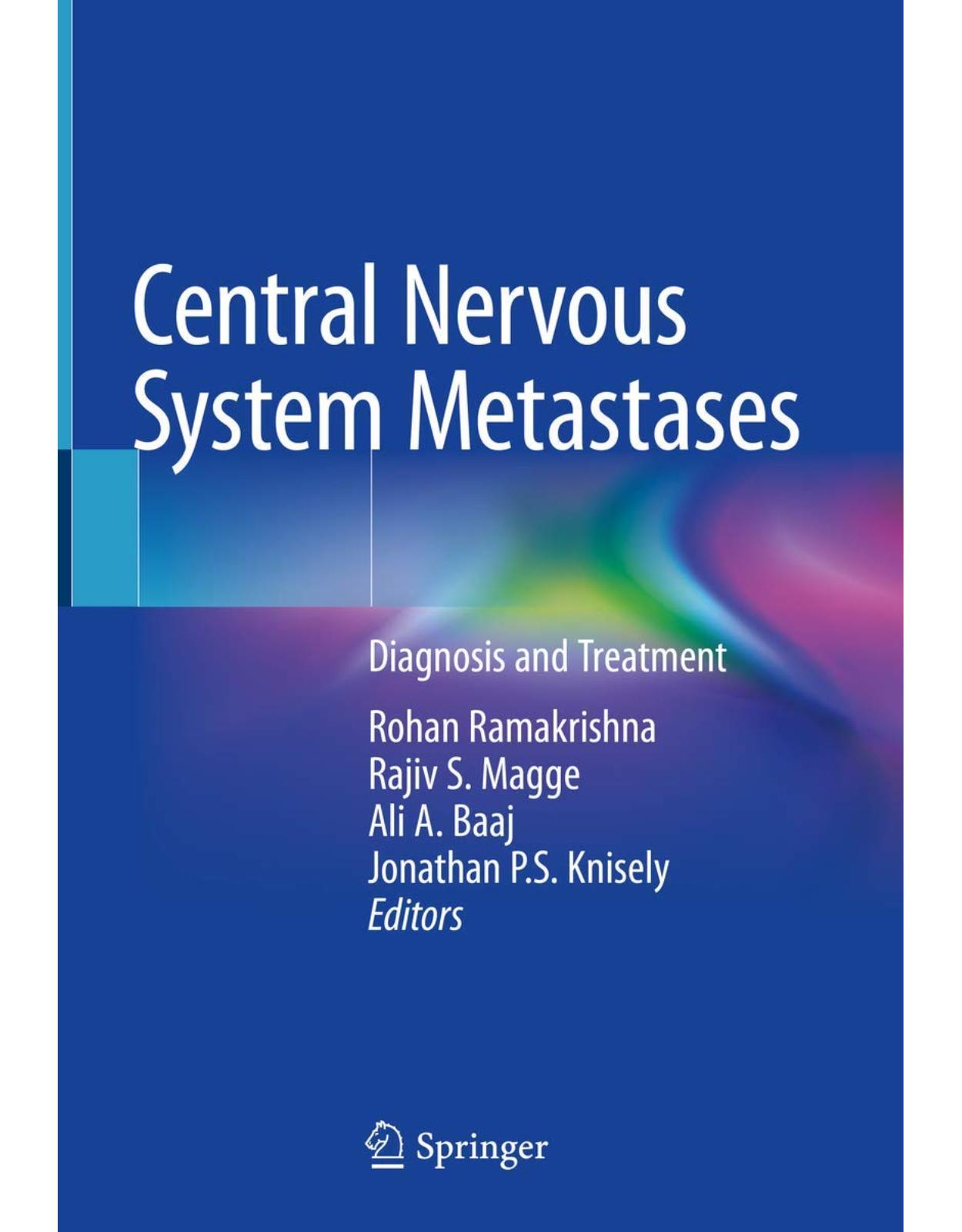
Radiation Oncology Management Decisions 4 e
Livrare gratis la comenzi peste 500 RON. Pentru celelalte comenzi livrarea este 20 RON.
Disponibilitate: La comanda in aproximativ 4 saptamani
Editura: LWW
Limba: Engleza
Nr. pagini: 900
Coperta: Hardback
Dimensiuni: 15.2 x 3.6 x 22.9 cm
An aparitie: 2018
Description:
Updated with details on the newest therapies and sporting a new full-color design, this latest edition of Radiation Oncology: Management Decisions continues to offer comprehensive guidance for residents as well as radiation oncologists already in professional practice. You’ll discover the latest treatment plans for numerous cancer sites and tumor types, including the mouth and sinus, gastrointestinal areas, lungs, bones, and blood. Concise, easy-to-read material you can use in a clinical setting immediately with patients!
Table of Contents:
Contents
1. Fundamentals of Patient Management
Management of the Patient with Cancer
Process of Radiation Therapy
Basis for Prescription of Irradiation
Radiation Treatment Planning
Three-Dimensional Treatment Planning
Intensity-Modulated Radiation Therapy
Probability of Tumor Control
Normal Tissue Effects
Therapeutic Ratio (Gain)
Dose-Time Factors
Prolongation of Overall Treatment Time, Tumor Control, and Morbidity
Linear-Quadratic Equation (α/β Ratio)
Combination of Therapeutic Modalities
Preoperative Radiation Therapy
Postoperative Irradiation
Irradiation and Chemotherapy
Integrated Multimodality Cancer Management
Quality Assurance
Quality Assurance Committee
Psychological, Emotional, and Somatic Support for the Radiation Therapy Patient
Quality-of-Life Studies
Ethical Considerations
Professional Liability and Risk Management
Informed Consent
2. Beam Dosimetry, Physics, and Clinical Applications
Clinical Photon Beam Dosimetry
Single-Field Isodose Distributions
Buildup Region
Tissue Heterogeneities
Prostheses (Steel and Silicon)
Wedge Filters
Parallel-Opposed Fields
Field Shaping
Compensating Filters
Bolus
Separation of Adjacent X-Ray Fields
Field Junctions
Orthogonal Field Junctions
Radiation Therapy in Patients with Cardiac Pacemakers
Dosimetry for Peripheral Radiation to the Fetus
Effects by Gestational Age Postconception
Physics and Clinical Applications of Electron Beam Therapy
Physical Characteristics of Electron Beams
Clinical Characteristics of Electron Beams
Clinical Applications
3. Three-Dimensional Physics and Treatment Planning
Three-Dimensional Treatment Planning Systems
Conformal Radiation Therapy
Preplanning and Localization
Computed Tomography Imaging for Three-Dimensional Planning
Critical Structure, Tumor, and Target Volume Delineation
Designing Beams and Field Shaping
Dose Calculation
Plan Optimization and Evaluation
Treatment Documentation
Plan and Treatment Verification
Volume and Dose Specification for Three-Dimensional Conformal Radiation Therapy
Practical Use of Gross Tumor Volume, Clinical Target Volume, and Planning Target Volume
Dose-Volume Histograms
Differential Dose-Volume Histograms
Cumulative Dose-Volume Histograms
Dose-Volume Statistics
Plan Evaluation Using Dose-Volume Histograms and Dose-Volume Statistics
Biologic Models
Digitally Reconstructed Radiographs
Intensity-Modulated Radiation Therapy
Quality Assurance for Three-Dimensional Conformal Radiation Therapy and Intensity-Modulated Radiation Therapy
Future Directions in Three-Dimensional Conformal Radiation Therapy and Intensity-Modulated Radiation Therapy
4. Advanced Treatment Technology (IMRT, SRS, SBRT, IGRT, Proton Beam Therapy)
Basic Physical Principles of Intensity-Modulated Radiation Therapy
Inverse Treatment Optimization and Criterion
Intensity-Modulated Radiation Therapy Treatment Delivery Systems
Fixed Field Multileaf Collimator
Intensity-Modulated Arc Therapy
Fixed Field with Compensating Filter
Patient Immobilization and Image Acquisition
Specification of Prescription Dose
Target Delineation
Dosimetric Advantage of Intensity-Modulated Radiation Therapy
Stereotactic Irradiation
Radiosurgery Techniques
Indications for Stereotactic Radiosurgery
Radiosurgery Systems
Gamma Knife
Linac-Based System
Target Volume Determination and Localization
Arteriovenous Malformations
Neoplasms
Arteriovenous Malformations
Gliomas
Brain Metastases
Meningiomas
Acoustic Neuromas
Imaging Studies after Radiosurgery
Total-Body and Hemibody Irradiation
Total-Body Irradiation
Hemibody Irradiation
Image-Guided Radiotherapy
Interfraction Adjustments
Intrafraction Alternations
Particle Beam Radiotherapy
5. Altered Fractionation Schedules
Irradiation Fractionation Regimens
Overall Time
Split-Course Versus Continuous-Course Treatment
Linear-Quadratic Equation
Hyperfractionation
Accelerated Fractionation
Clinical Studies
Predominantly Hyperfractionation: Phase I and II Studies
Predominantly Hyperfractionation: Phase III Studies
Type A: Continuous Short Intensive Courses
Type C: Concomitant Boost
Other Randomized Trials
Hypofractionation
Conclusions
6. Physics and Dosimetry of Brachytherapy
Brachytherapy Techniques
Dose Rate
Classic Systems for Interstitial Implants
Manchester System
Quimby System
Paris System
Intracavitary Treatment of Carcinoma of the Uterine Cervix
Manchester Therapy System
Volumetric Specification of Intracavitary Treatment: International Commission on Radiation Units and Measurements Report No. 38
Intracavitary Brachytherapy Dose Specification
High Dose Rate Brachytherapy
Dosimetry
Dose or Volume Optimization
Radiobiologic Dosimetry
Linear-Quadratic Model for Brachytherapy
Biologically Effective Dose Calculation of Equivalence
High Dose Rate Applications
Dose Fractionation in High Dose Rate Brachytherapy
Image-Guided Brachytherapy in Cervical Cancer
Introduction
Methods
Dose Specification to Tumor and Organs at Risk
Future Directions
7. Unsealed Radionuclides: Physics and Clinical Applications
Iodine-131 (I)
Benign Thyroid Conditions
Malignant Thyroid Conditions
Phosphorus-32 (P)
Polycythemia Vera
Malignant Ascites or Pleural Effusion
Samarium-153 (Sm) (Quadramet)
Strontium-89 (Sr)
Bony Metastases
Rhenium-186 (Re)
Yttrium-90 (Y)
Quality Assurance and Nuclear Regulatory Commission
8. Late Effects of Cancer Treatment and the QUANTEC Review
Background
Brain
Spinal Cord
Lung
Heart
Esophagus
Liver
Kidney
Small and Large Intestines
Salivary Glands
Cornea, Lacrimal Gland, and Lens
Retina and Optic Tract
9. Skin Cancer, Kaposi’s Sarcoma, and Cutaneous Lymphoma
Skin
Anatomy
Epidemiology
Diagnostic Workup
Staging
Clinicopathologic Manifestations
General Management
Radiation Therapy Techniques
Melanoma
Staging
General Management of Malignant Melanoma
Merkel Cell Carcinoma
General Management of Merkel Cell Carcinoma
Radiation Therapy Techniques
Sequelae of Skin Irradiation
Non–Aids-Associated Kaposi’s Sarcoma
Natural History
Diagnostic Workup
Pathology
General Management
Kaposi’s Sarcoma in Immunosuppressed States
Aids-Associated Kaposi’s Sarcoma
Natural History
Diagnostic Workup
Pathology
Prognostic Factors
General Management
Radiation Therapy
Cutaneous T-Cell Lymphoma
Natural History
Diagnostic Workup
Staging Systems
Pathologic Classification
Prognostic Factors
General Management
Radiation Therapy Techniques
Sequelae of Treatment
Short-Term Sequelae
Long-Term Sequelae
10. Management of Adult Central Nervous System Tumors
Brain, Brainstem, and Cerebellum
Anatomy
Natural History
Clinical Presentation
Diagnostic Workup
Histopathology and Staging
Prognostic Factors
General Management
Radiation Therapy
Radiation Therapy Techniques
Chemotherapy
Sequelae of Treatment
Management of Individual Tumors
Anaplastic Astrocytoma and Glioblastoma (High-Grade Gliomas)
Low-Grade Astrocytomas and Oligodendrogliomas
Brainstem Gliomas
Ependymoma
Medulloblastoma and Supratentorial Primitive Neuroectodermal Tumor
Pineal Region
Primary Central Nervous System Lymphomas
Meningioma
Craniopharyngioma
Acoustic Neuroma and Neurofibroma
Hemangioblastoma and Hemangiopericytoma
Pituitary
Anatomy
Natural History
Clinical Presentation and Diagnostic Workup
Staging
Pathologic Classification
Prognostic Factors
General Management
Radiation Therapy Techniques
Adenomas with Mass Effect
Sequelae of Treatment
Spinal Canal
Anatomy
Natural History
Clinical Presentation
Diagnostic Workup
Pathologic Classification
Prognostic Factors
General Management
Radiation Therapy Techniques
Radiation Therapy Doses
Intramedullary Ependymomas and Astrocytomas
Ependymomas of the Cauda Equina
Meningiomas
Normal Tissue Complications—QUANTEC Results
Brain
Optic Nerve and Chiasm
Brainstem
Spinal Cord
11. Nasopharynx
Anatomy
Epidemiology and Natural History
Clinical Presentation
Diagnostic Workup
Staging
Pathologic Classification
Prognostic Factors
General Management
Radiation Therapy Techniques
Rationale for IMRT
Brachytherapy
Normal Tissue Complications—QUANTEC
Chemotherapy
Sequelae of Treatment
Retreatment of Recurrent Nasopharyngeal Carcinoma
Nasopharyngeal Carcinoma in Patients Younger Than 30 Years of Age
12. Nasal Cavity and Paranasal Sinuses
Anatomy
Natural History
Nasal Vestibule
Diagnostic Workup
Pathologic Classification
Prognostic Factors
General Management
Nasal Vestibule
Nasal Cavity
Paranasal Sinuses
Rare Histologies
Radiation Therapy Techniques
Sequelae of Treatment
Surgery
Radiation Therapy
13. Salivary Glands
Anatomy
Parotid Gland
Submandibular Gland
Sublingual Gland
Natural History
Clinical Presentation
Diagnostic Workup
Staging System
Pathologic Classification
Prognostic Factors
General Management
Major Salivary Gland
Minor Salivary Gland
Radiation Therapy Techniques
Parotid Gland
Submandibular Gland
Pleomorphic Adenoma
Minor Salivary Gland
Sequelae of Treatment
14. Oral Cavity
Anatomy
Epidemiology and Risk Factors
Histology
Natural History and Patterns of Spread
Lip
Buccal Mucosa
Gingiva
Retromolar Trigone
Hard Palate
Floor of the Mouth
Oral Tongue
Presentation
Workup
Staging
General Management
Surgical Technique and Site-Specific Considerations
Management of Neck Nodes
Radiation Therapy Techniques
External Beam Radiation Therapy
Interstitial Irradiation
Intraoral Cone
Treatment of Specific Subsites
Lip
Buccal Mucosa
Gingiva
Floor of the Mouth
Oral Tongue
Outcomes and Follow-Up
Sequelae of Treatment
Surgical Complications
Radiation Complications
15. Oropharynx and Hypopharynx
Oropharynx
Anatomy
Etiology
Epidemiology
Natural History and Patterns of Spread
Clinical Presentation
Diagnostic Workup
Pathologic Classification
Prognostic Factors
General Management by Stage
Radiation Therapy Techniques
Sequelae of Treatment
Hypopharynx
Anatomy
Natural History and Patterns of Spread
Diagnostic Workup
Pathologic Classification
Prognostic Factors
General Management
Radiation Therapy Techniques
Sequelae of Treatment
16. Larynx
Anatomy
Epidemiology and Risk Factors
Natural History
Supraglottic Larynx
Glottic Larynx
Subglottic Larynx
Lymphatic Spread
Diagnostic Workup
Management
Glottic (Vocal Cord) Carcinoma
Supraglottic Larynx Carcinoma
Comparison of Surgery and Radiation Therapy
Chemoradiotherapy for Laryngeal Preservation
IMRT Target Volume Delineation
Definitive IMRT for Laryngeal Carcinoma (Intact Larynx)
Postoperative IMRT for Laryngeal Carcinoma
Follow-Up
Sequelae of Treatment
Surgical Sequelae
Radiation Therapy Sequelae
17. Rare Tumors of the Head and Neck
Nonepithelial Tumors of the Head and Neck
Glomus Tumors
Hemangiopericytoma
Chordomas
Extranodal Nasal-Type NK/T-Cell Lymphoma
Myeloid Sarcoma
Esthesioneuroblastoma
Extramedullary Plasmacytomas
Nasopharyngeal Angiofibroma
Nonlentiginous Melanoma
Lentigo Maligna Melanoma
Sarcomas of the Head and Neck
Ear
Anatomy
Clinical Presentation and Pathologic Classification
Diagnostic Workup
Prognostic Factors
Staging System
Treatment
Outcomes
Radiation Therapy Techniques
Sequelae of Treatment
Eye
Anatomy
Ocular Malignancies
Uveal Tumors
Retinoblastoma
Optic Glioma
Orbital Tumors
Lacrimal Gland Tumors
Normal Tissue Complications/Sequelae of Treatment
18. Thyroid
Anatomy
Natural History
Diagnostic Workup
Staging
Pathologic Classification
Differentiated Thyroid Cancer
Medullary Thyroid Cancer
Anaplastic Thyroid Cancer
Prognostic Factors
General Management
Differentiated Thyroid Cancer
Medullary Thyroid Cancer
Anaplastic Thyroid Cancer
Radiation Therapy Techniques
Sequelae of Treatment
19. Lung
Anatomy
Natural History
Clinical Presentation
Diagnostic Workup
Staging
Pathologic Classification
Prognostic Factors
General Management
Non–Small Cell Lung Cancer
Small Cell Lung Cancer
Radiation Therapy Techniques
Volumes, Portals, Beam Arrangements, and Planning
Tumor Doses
Brachytherapy
Superior Sulcus Lung Carcinoma
Superior Vena Cava Syndrome
Sequelae of Therapy
Acute Sequelae
Late Sequelae
Mediastinum and Trachea
Anatomy
Thymomas
Malignant Mediastinal Germ Cell Tumors
Tracheal Tumors
Normal Tissue Complications—QUANTEC Results
Sequelae of Treatment
20. Esophagus
Anatomy
Natural History
Clinical Presentation
Diagnostic Workup
Staging Systems
Prognostic Factors
General Management
Single-Modality Therapy
Multimodality Therapy
Palliative Treatment
Radiation Therapy Techniques
Radiation Dose
Normal Tissue Complications: Quantec Results
Sequelae of Treatment
Surgery
Radiation Therapy
21. Breast: Stage Tis, T1, and T2 Tumors
Epidemiology
Risk Factors
Anatomy
Clinical Presentation
Diagnostic Workup
Pathologic Studies
Pathologic Classification
Staging
Prognostic Factors for Relapse and Survival
Patient Factors
Axillary Nodal Status
Tumor Size
Histologic Type
Histologic Grade
Proliferation Index
Lymphatic and Vascular Invasion
Hormonal Receptor and HER2 Status
Lobular Carcinoma In Situ
Treatment of Lobular Carcinoma In Situ
Ductal Carcinoma In Situ
Treatment of Ductal Carcinoma In Situ
Future Direction
Management of Invasive Breast Cancer
Breast Conservation
Surgical Management of Axillary Lymph Nodes
Irradiation of Regional Lymph Nodes
Use of a Lumpectomy Boost
Accelerated Partial Breast Irradiation
Omission of Radiation Therapy
Adjuvant Systemic Therapy
Radiation Therapy Techniques for Whole-Breast Irradiation
Beam Arrangement
Normal Tissue and Late Complications
Follow-Up of Patients Treated with Conservation Surgery and Irradiation
22. Breast: Locally Advanced (T3 and T4), Inflammatory, and Recurrent Tumors
Natural History and Clinical Presentation
Locally Advanced (T3 and T4) Tumors
Diagnostic Workup
Prognostic Factors
General Management
Surgery
Management of the Axilla After Neoadjuvant Therapy
Postmastectomy Radiation Therapy
Radiation Therapy Techniques
Irradiation of the Inoperable Breast
Irradiation of the Chest Wall
Field Borders
Matchline Technique
Doses
Locoregional Recurrence After Mastectomy
Sequelae of Therapy
23. Stomach
Anatomy
Epidemiology
Natural History
Clinical Presentation
Diagnostic Workup
Staging Systems
Pathologic Classification
Prognostic Factors
General Management
Multimodality Management
Radiation Therapy Techniques
Normal Tissue Complications—QUANTEC Results
Sequelae of Treatment
24. Pancreas and Hepatobiliary Tract
Pancreatic Cancer
Anatomy
Clinical Presentation
Diagnostic Workup
Staging System
General Management
Radiation Therapy Techniques
Biliary Tract Cancer
Anatomy
Clinical Presentation
Diagnostic Workup
Staging System
Prognostic Factors
General Management
Liver Cancer
Anatomy
Clinical Presentation
Diagnostic Workup
Staging System
General Management
Radiation Therapy Techniques
Normal Tissue Complications—QUANTEC Results
Sequelae of Treatment
Biliary Duct Tolerance
25. Colon and Rectum
Anatomy
Rectum
Colon
Natural History
Clinical Presentation
Diagnostic Workup
Staging Systems
Pathology
Prognostic Factors
General Management
Patterns of Failure after Curative Resection
Colon
Rectum
Radiation Therapy Techniques
External Beam Radiation Therapy
Sphincter Preservation
Normal Tissue Complications—QUANTEC Results
Dose-Volume Constraints for Conventional Fractionation up to 78 Gy
Sequelae of Treatment
Targeted Therapies
26. Anal Canal
Anatomy
Natural History
Clinical Presentation
Diagnostic Workup
Staging
Pathologic Classification
Prognostic Factors
General Management
Combined-Modality Therapy
Radiation Therapy
Radiation Therapy Techniques
Normal Tissue Complications
Perianal
Sequelae of Therapy
27. Upper Urinary Tract
Kidney, Renal Pelvis, and Ureter
Anatomy
Natural History
Renal Cell Carcinoma
Renal Pelvis and Ureter Carcinoma
Clinical Presentation
Renal Cell Carcinoma
Renal Pelvis and Ureter Carcinoma
Diagnostic Workup
Renal Cell Carcinoma
Renal Pelvis and Ureter Carcinoma
Staging
Pathologic Classification
Prognostic Factors
Renal Cell Carcinoma
Renal Pelvis and Ureter Carcinoma
General Management
Renal Cell Carcinoma
Renal Pelvis and Ureter Carcinoma
Radiation Therapy Techniques
Renal Cell Carcinoma
Renal Pelvis and Ureter Carcinoma
Normal Tissue Complications—QUANTEC Results
Sequelae of Therapy
28. Bladder
Anatomy
Natural History
Clinical Presentation
Diagnostic Workup
Staging Systems
Pathologic Classification
Prognostic Factors
General Management
Superficial Bladder Cancer
Muscle-Invasive Bladder Cancer
Chemotherapy
Targeted Therapies
Radiotherapy Techniques
Normal Tissue Complications
Sequelae of Therapy
29. Prostate
Anatomy
Natural History
Clinical Presentation
Diagnostic Workup
Staging
Prognostic Factors
Tumor-Related Factors
Host-Related Factors
Radiographic Versus Surgical Staging
Pathology
General Management
Natural Course of Disease
Hormone Androgen Deprivation Therapy
Irradiation and Adjuvant or Neoadjuvant Endocrine Therapy
Irradiation of the Breast before Hormonal Therapy
Radiation Therapy Techniques
External Irradiation
Tumor Doses
Target Delineation for Prostate Intensity-Modulated Radiation Therapy
Low- and Intermediate-Risk Disease
High-Risk Disease with Nodes at Risk
Interstitial Irradiation
Postoperative Radiation Therapy
Postprostatectomy Salvage Radiotherapy
Target Delineation for Postprostatectomy Intensity-Modulated Radiation Therapy
Planning Parameters: Postoperative CTV1
Normal Tissue Complications: QUANTEC Results
Sequelae of Therapy
Radiation Therapy
Combined Surgery and Irradiation
30. Testis
Epidemiology and Risk Factors
Natural History
Clinical Presentation
Diagnostic Workup
Staging
Prognostic Factors
General Management
Stage I Seminoma
Stage II TO III Seminoma
Surveillance Protocols
Nonseminoma
Treatment-Related Toxicity
Radiation Therapy Techniques
Adjuvant RT for Stage I Seminoma
RT for Stage II Seminoma
31. Urethra and Penis
Female Urethra
Anatomy
Clinical Presentation
Diagnostic Workup
Staging
Prognostic Factors
General Management
Radiation Therapy Techniques
Sequelae of Treatment
Penis and Male Urethra
Anatomy
Natural History
Clinical Presentation
Diagnostic Workup
Staging Systems
Pathologic Classification
Prognostic Factors
General Management
Radiation Therapy Techniques
Chemotherapy
Normal Tissue Complications—QUANTEC Results
Sequelae of Treatment
32. Uterine Cervix
Epidemiology
Anatomy
Natural History and Patterns of Spread
Clinical Presentation
Screening and Diagnostic Workup
Human Papillomavirus
Papanicolaou Smear and Screening Guidelines
Physical Exam, Blood Work, and Biopsy
Imaging
Staging
Surgical Staging
Pathologic Classification
Prognostic Factors
Risk of Lymph Node Involvement
Recurrence and Survival
General Management
Treatment Recommendations by Stage
Carcinoma In Situ
Stage IA1
Stage IA2
Stages IB and IIA
Stage IIB to IVB
Recurrent Disease
Small Cell Carcinoma of the Cervix
Invasive Cancer Incidentally Diagnosed Following Simple Hysterectomy
Chemotherapy Regimens
Radiation Therapy
Introduction
External Beam Radiation Therapy
Brachytherapy
Sequelae of Radiation Therapy
Carcinoma of the Cervix and Pregnancy
Management
Outcomes in Pregnant Patients
Carcinoma of the Cervical Stump
Seminal Randomized Clinical Trials
Summary
Definitive Radiation Therapy Versus Surgery for Early-Stage Cervical Cancer
Adjuvant Therapy after Radical Hysterectomy
Definitive Concurrent Chemoradiation Versus Radiotherapy Alone
Chemotherapy Regimens
Clinical Trials
33. Endometrium
Anatomy
Epidemiology
Natural History
Clinical Presentation
Diagnostic Workup
Staging System
Pathologic Classification
Prognostic Factors
General Management
Operable FIGO Stage I Endometrial Carcinoma
Operable FIGO Stage II Endometrial Carcinoma
Adjuvant Radiation Therapy in Early-Stage Disease
Advanced Stage FIGO Stage III to IV
Medically Inoperable Patients
Recurrent Endometrial Carcinoma
Radiation Therapy Techniques
External Beam Radiation Treatment
Brachytherapy
Medically Inoperable
Recurrent Endometrial Carcinoma
Sequelae of Treatment
Randomized Studies for Adjuvant Radiation
Randomized Studies for Lymphadenectomy
Randomized Studies for Chemotherapy
34. Ovary and Fallopian Tube
Introduction
Epidemiology
Anatomy
Natural History
Pathologic Classification
Screening
CA-125
Clinical Presentation
Diagnostic Workup
Staging Systems
Prognostic Factors
Lymph Node Involvement
Survival
General Management
Surgery
Systemic Therapy for Epithelial Ovarian Carcinoma
Early-Stage Disease
Advanced-Stage Disease
Recurrent Disease
Management of Less Common Ovarian Histologies
Borderline Epithelial Tumors
Carcinosarcoma
Clear Cell Carcinoma
Malignant Sex Cord–Stromal Tumors
Malignant Germ Cell Tumors
Radiation Therapy
Colloidal Intraperitoneal Phosphorus-32
Adjuvant Radiotherapy
Consolidative Radiotherapy
Salvage Radiotherapy
Clear Cell Carcinoma
Palliative Radiotherapy
Radiation Therapy Techniques
Whole Abdomen Radiation Therapy
Involved Field Radiation Therapy
Stereotactic Body Radiation Therapy
Sequelae of Radiation Therapy
35. Vagina
Anatomy
Epidemiology and Natural History
Clinical Presentation
Diagnostic Workup
Staging
Pathology
Squamous Cell Carcinoma
Adenocarcinoma
Melanoma
Sarcoma
Others
General Management
Vaginal Intraepithelial Neoplasia
Stage I
Stage II
Stage III to IVA
Other Histologies
Clear Cell Adenocarcinoma
Melanoma
Sarcoma
Outcomes
Radiation Therapy Techniques
External Beam Radiation Therapy
Simulation
Two-Dimensional (2D) Treatment Planning
Three-Dimensional (3D) Treatment Planning
Intensity-Modulated Radiation Therapy
Brachytherapy
Intracavitary Brachytherapy
Interstitial Brachytherapy
Sequelae of Treatment
36. Vulva
Introduction
Anatomy
Natural History
Clinical Presentation
Diagnostic Workup
Staging
Pathologic Classification
Prognostic Factors
General Management
Stage I and II Tumors
Stage III and IV Tumors
Adjuvant Therapy
Radiation Therapy Techniques
Patient Positioning and Simulation
Radiation Therapy Doses
Radiation Therapy Targets
Radiation Therapy Techniques
Treatment for Recurrent Lesions
Sequelae of Treatment
Randomized Studies
37. Hodgkin Lymphoma
Natural History and Clinical Presentation
Diagnostic Workup
Staging System
Pathologic Classification
Prognostic Factors
General Management
Radiation Therapy
Chemotherapy
Combined-Modality Therapy
Radiation Therapy Techniques
Mantle
Preauricular Field
Subdiaphragmatic Fields
3D Treatment Planning
Favorable Prognosis Stage I to IIA Disease (Supradiaphragmatic)
Favorable Prognosis Stage I to IIA Disease (Subdiaphragmatic)
Limited Presentations of Stage I to IIA Nodular Lymphocyte Predominance HL
Unfavorable Prognosis Stage I to II (Supradiaphragmatic) Classical HL
Stage III or IV Disease
Pediatric and Elderly Management
Hodgkin Lymphoma during Pregnancy and in Human Immunodeficiency Virus–Infected Patients
Treatment for Relapse
Stem Cell Transplant
Follow-Up
Sequelae of Treatment
38. Non-Hodgkin Lymphomas
Etiology
Natural History
Diagnostic Workup
Staging System
Pathologic Classification
Prognostic Factors
General Management
Radiation Therapy
Chemotherapy and Combined-Modality Therapy
Management by Histologic Type, Site, and Stage
Diffuse Large B-Cell Lymphomas: Stage I/II
Diffuse Large B-Cell Lymphomas: Stage III/IV
Follicular Lymphoma: Stages I and II
Follicular Lymphoma: Stages III and IV
Marginal Zone Lymphomas
Peripheral T-Cell Lymphomas
Small Lymphocytic Lymphoma
Mantle Cell Lymphoma
Primary Extranodal Lymphomas
Gastrointestinal Lymphoma
DLBCL Gastric Lymphoma
MALT Gastric Lymphoma
Intestinal Lymphoma
Salivary Gland Lymphoma
Thyroid Lymphoma
Orbital Lymphoma
Breast Lymphoma
Testicular Lymphoma
Bone Lymphoma
Primary Central Nervous System Lymphoma
Cutaneous Lymphoma
39. Multiple Myeloma and Plasmacytomas
Epidemiology
Natural History
Clinical Presentation
Solitary Plasmacytoma
Diagnostic Workup
Multiple Myeloma
Plasmacytoma
Prognostic Factors
General Management
Solitary Plasmacytoma
Multiple Myeloma
Autologous Stem Cell Transplantation
Chemotherapy
Novel Biologic Agents
Radiation Therapy
Total Body and Hemibody Irradiation
Radioimmunotherapy
Radiation Therapy Techniques
Solitary Plasmacytomas
Multiple Myeloma
Acknowledgment
40. Primary Bone Tumors, Including Ewing’s Sarcoma
Anatomy
Clinical Presentation and Natural History
Diagnostic Workup
Staging Systems
Pathologic Classification
Prognostic Factors
General Management
Osteosarcoma
Chondrosarcoma
Undifferentiated Pleomorphic Sarcoma of Bone
Giant Cell Tumor
Aneurysmal Bone Cyst
Chordoma
Ewing’s Sarcoma
Radiation Therapy Techniques
Osteosarcoma
Chondrosarcoma
Undifferentiated Pleomorphic Sarcoma of Bone
Giant Cell Tumor
Chordoma
Ewing’s Sarcoma
Sequelae of Treatment
Follow-Up/Surveillance
41. Soft Tissue Sarcoma
Retroperitoneal Soft Tissue Sarcoma
Anatomy
Natural History
Clinical Presentation
Diagnostic Workup
Staging System
Pathologic Classification
Prognostic Factors
General Management
Chemotherapy
Radiation Therapy Techniques
Sequelae of Treatment
Follow-Up/Surveillance
Soft Tissue Sarcomas (Excluding Retroperitoneum)
Anatomy
Clinical Presentation and Risk Factors
Pathologic Classification
Diagnostic Workup
Staging System
Prognostic Factors
General Management
Radiation Therapy Techniques
Chemotherapy
Sequelae of Treatment
42. Brain Tumors in Children
Anatomy and Development
Medulloblastoma
Management
Radiation Therapy
Embryonal Tumors/Primitive Neuroectodermal Tumors and Malignant Rhabdoid or Atypical Teratoid Tumors
Management
Ependymoma
Prognostic Factors
Management
Radiation Therapy
Malignant Brain Tumors in Infants and Young Children
Management
Low-Grade Gliomas
Low-Grade Diencephalic Gliomas (Optic Chiasmatic/Hypothalamic Gliomas, Low-Grade Thalamic Gliomas)
Low-Grade Cerebral Hemispheric Gliomas
Cerebellar Astrocytomas
Malignant Gliomas
Management
Radiation Therapy
Brainstem Gliomas
Management
Radiation Therapy
Craniopharyngioma
Management
Radiation Therapy
Pineal Region Tumors and Intracranial Germ Cell Tumors
Management
Radiation Therapy
Sequelae of Treatment
43. Wilms’ Tumor
Natural History
Prognostic Factors
Clinical Presentation
Diagnostic Workup
Staging
Pathologic Classification
General Management
Radiation Therapy Techniques
Late Effects of Treatment
44. Neuroblastoma
Natural History
Clinical Presentation
Diagnostic Workup
Staging
Pathologic Classification
Prognostic Factors
General Management
Radiation Therapy Techniques
Sequelae of Treatment
Early Complications
Late Effects
45. Rhabdomyosarcoma
Anatomy
Natural History and Patterns of Spread
Prognostic Factors
Clinical Presentation
Diagnostic Workup
Staging
Pathologic Classification
General Management
Orbit
Head and Neck: Parameningeal Sites
Head and Neck: Nonparameningeal Sites
Pelvis
Extremity
Chemotherapy
Radiation Therapy Techniques
Sequelae of Therapy
46. Lymphomas in Children
Hodgkin’s Lymphoma
Pathologic Classification
Clinical Presentation
Diagnostic Workup
Staging
Prognostic Factors
General Management
Radiation Therapy Alone
Chemotherapy Alone
Combined Chemotherapy and Radiation Therapy
Risk-Adapted Therapy
Radiation Therapy Techniques
Non-Hodgkin’s Lymphoma
Pathologic Classification
Prognostic Factors
Clinical Presentation
Diagnostic Workup
Staging Systems
General Management
Radiation Therapy
Primary Non-Hodgkin’s Lymphoma of Bone
Central Nervous System Prophylaxis and Overt Central Nervous System Disease
Testicular Lymphoma
Sequelae of Radiation Therapy
47. Radiation Treatment of Benign Disease
Technical Considerations
Radiation Therapy Techniques
Eye
Thyroid Ophthalmopathy
Orbital Pseudotumor
Pterygium
Age-Related Macular Degeneration
Central Nervous System
Arteriovenous Malformations
Skin
Keloids
Plantar Warts
Keratoacanthoma
Hemangiomas
Cutaneous Hemangiomas
Ocular Angiomas
Cavernous Hemangioma of the Liver
Soft Tissue
Bursitis and Tendinitis
Desmoid Tumor
Peyronie’s Disease
Prevention of Vascular Restenosis
Arrhythmias
Bone
Aneurysmal Bone Cyst
Vertebral Hemangioma
Heterotopic Bone Formation
Glandular Tissue
Gynecomastia
Parotitis
Sialorrhea
Conclusion
48. Palliation: Brain, Spinal Cord, Bone, and Visceral Metastases
Brain Metastases
Epidemiology and Natural History
Prognostic Factors
Diagnostic Workup
General Management
Radiation Therapy Techniques
Spinal Cord Compression
Natural History
Prognostic Factors
Clinical Presentation
Diagnostic Workup
General Management
Radiation Therapy Techniques
Bone Metastases
Natural History
Diagnostic Workup
General Management
Radiation Therapy Techniques
Superior Vena Cava Obstruction
Diagnosis
Treatment
49. Pain Management in Radiation Oncology
Introduction
Assessment
Mitigating Risk
Pharmacologic Treatment of Cancer Pain
Management of Neuropathic Pain
Management of Bone Pain
Management of Opioid-Related Side Effects
Opioid Rotation
Strategies for Refractory Pain
Appendix: Commonly Prescribed Drugs
Index
| An aparitie | 2018 |
| Autor | K.S. Clifford Chao, Carlos A. Perez and Tony J. C. Wang |
| Dimensiuni | 15.2 x 3.6 x 22.9 cm |
| Editura | LWW |
| Format | Hardback |
| ISBN | 9781496391094 |
| Limba | Engleza |
| Nr pag | 900 |
-
1,87400 lei 1,50000 lei
-
1,30400 lei 1,24000 lei











Clientii ebookshop.ro nu au adaugat inca opinii pentru acest produs. Fii primul care adauga o parere, folosind formularul de mai jos.